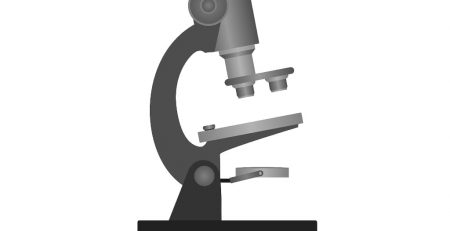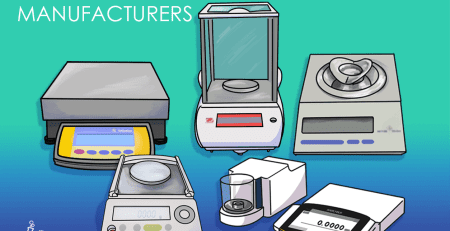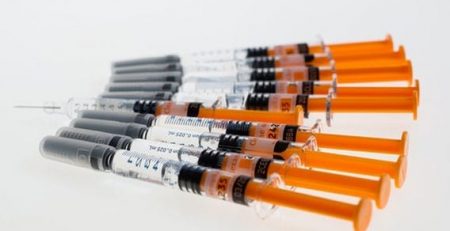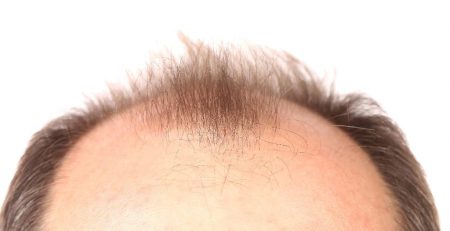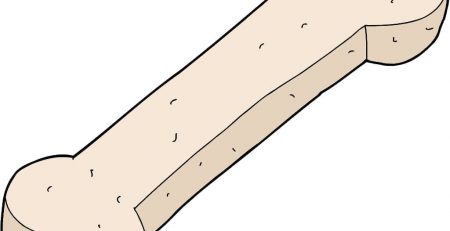50 Jaw-Dropping Pharmaceutical, Biotech, and Life Science Statistics
Hello LabWorld Group blog subscribers,
We came across this interesting blog written by Sean Williams and wanted to share with you. We’ve found this article extremely resourceful as it sums up a lot of today’s commerce in the Life Science, Pharmaceutical and Biotechnology community. We hope you enjoy as we have.
Without question, I understand how intimidating the pharmaceutical, biotech, and life science sector can be for those without a background in science. If it’s not the science and discovery process itself, or the cross-company collaborations, simply trying to accurately spell or pronounce experimental drug names will almost certainly send most investors running for the hills. But, the pharmaceutical, biotech, and life science sectors are a booming industry rife with big investment dollars, a steady history of growth, and life-changing attributes. Too many investors keep health-care companies out of their portfolio because they’re simply afraid of getting their feet wet in a sector that’s proven time and again that it can deliver for shareholders in a big way.
With that in mind — I prepared a list of 50 jaw-dropping pharmaceutical, biotech, and life science statistics that I suspect will excite and amuse those of you who are borderline health-care investors and, if anything, should spur you to put at least a few health-care companies on your radar.
1. According to the U.S. National Institutes of Health’s ClinicalTrials.gov website, there are currently 139,372 clinical studies being conducted throughout 182 countries as of Jan. 28, 2013.
2. The number of registered clinical studies has increased by an average of 28% annually since the year 2000.
3. According to PhRMA, $49 billion was spent last year on researching more than 2,900 compounds.
4. As noted by Forbes, Bernard Munos of the InnoThink Center for Research in Biomedical Innovation has pegged the cost of drug research at $4 billion for every drug that’s approved, and including all previously failed drugs.
5. It takes an average of between 11 and 14 years to go from a laboratory setting to getting a drug approved by the Food and Drug Administration, according to The Independent Institute.
6. Also according to The Independent Institute, only three out of every 10 drugs investigated in preclinical studies ever make it to phase 1 trials.
7. Drug patents are granted for 20 years and begin at the date of filing (which is usually at the start of clinical trials).
8. Pfizer (NYSE: PFE) , when ranked alongside other virtually pure-play pharmaceutical companies, is the largest drug maker in the world by revenue, bringing in $67.4 billion in revenue in 2011.
9. As noted by law firm Shook, Hardy, and Bacon, 48 intellectual property lawsuits were filed in 2012 in the biotechnology and life sciences sector – a 30% decrease from 2011, but nonetheless a high number for companies trying desperately to protect their innovations.
10. The FDA approved 39 new drugs in 2012, a dramatic rise from the 23 per year it’s averaged in the previous 15-year period, according to Bloomberg.
11. According to the World Health Organization, as of 2011, there were 12,420 different types of diseases and related health problems.
12. It’s difficult to get a drug approved for market — so difficult, in fact, that just one drug out of approximately every 5,000 to 10,000 tested in preclinical trials will ever make it to market, according to Medscape.
13. Merck’s (NYSE: MRK) recall of arthritis medication Vioxx in 2004 was one of the costliest on record. The Seattle Times pegged total settlement paid to users of the drug at $4.85 billion when all was said and done — all without Merck admitting guilt, may I add.
14. Alexion Pharmaceuticals’ (NASDAQ: ALXN ) Soliris, designed to treat a rare blood disorder known as paroxysmal nocturnal hemoglobinuria, is the most expensive drug in the world, costing users $400,000 per year.
15. Ribose-5-phosphate isomerase deficiency, or RPI deficiency, is the rarest disease in the world, with only one reported case discovered in 1999 through MRI and DNA analysis. There’s one for trivia night — and it’s brought to you by the Journal of Molecular Medicine.
16. FierceBiotech points out that the average public biotech firm spent $50 million on research & development in 2011, up 5% from the $47 million they spent on R&D in 2010.
17. As of 2010, according to the Bureau of Labor Statistics, the state of Massachusetts employed the most people directly involved with drug research and development: 28,000.
18. Generic drug shortages have risen by greater than 330% since 2004, to more than 250 in 2011, based on figures from the Wall Street Journal.
19. As of Oct. 1, 2009, there were 11,516 people employed by the Food and Drug Administration.
20. A recent study by Datamonitor discovered that of 346 new drug applications and biologics license applications submitted to the FDA after Oct. 1, 2008, 146 of them received a complete response rejection letter after initial review.
21. An even wider study on 748 NDAs and BLAs by the Biotechnology Industry Organization, or BIO, showed that from an initial submission through a third-round of resubmissions, 82.9% of all drugs and biologic licenses had been approved. A fourth and fifth round of resubmissions increased this total by just 1.4%.
22. The “Feuerstein-Ratain Rule” — named after TheStreet.com’s senior biotech columnist, Adam Feuerstein, and Dr. Mark Ratain, an oncologist from the University of Chicago — has predicted the failure companies with a market cap of less than $300 million months before a pivotal phase 3 trial for a cancer drug in 21 of 21 cases over the past decade. Included in that is Aeterna Zentaris, a personal holding of mine, whose drug, perifosine, failed to meet its endpoint in a late-stage colorectal cancer trial last year.
23. According to the British Medical Journal, a whopping 70% of all prescriptions written in the U.S. in 2011 were for generics.
24. Bioscience workers were paid an average of $82,697 in 2010. That’s $36,000, or 79%, higher than the average wage for a private sector employee in the U.S. based on a recent study by BIO.
25. The FDA approved the world’s first genetically engineered drug, human insulin (Humulin), in 1982. The drug was developed by Eli Lilly and Genentech.
26. The North American market is particularly important for drug companies. In 2011, North America was responsible for 41.8% of all pharmaceutical sales — that’s 56% more than Europe accounted for with its 26.8% share, based on figures from the European Federation of Pharmaceutical Industries and Associations.
27. A study from IMS Health forecast that the total value of the global pharmaceutical market increased as much as 7% to $880 billion in 2011.
28. Quantifying the cost of a disease can be difficult, but the National Institutes of Health did just that in 2010 when it estimated the overall cost of cancer to be $263.8 billion. The NIH further broke this figure down to include $102.8 billion in health-care expenses, $20.9 billion in lost productivity because of the disease, and $140.1 billion in lost productivity because of premature death.
29. Pfizer’s Lipitor is the most successful drug of all time, netting $131 billion in total sales since it hit the market. Bristol-Myers Squibb’s blood thinner Plavix ranks a distant second, with around $60 billion in lifetime sales, according to FierceBiotech.
30. According to Thomson Reuters Cortellis, between 2001 and 2010, orphan drug revenue growth (drugs targeting diseases affecting less than 200,000 people) surged an average of 25.8% annually compared to just 20.1% for non-orphan drugs over the same period.
31. It took Discovery Labs (NASDAQ: DSCO) five submissions and a total of eight years from its initial new drug application in 2004 to get Surfaxin approved. The interesting tidbit: It wasn’t denied the previous four times based on safety or efficacy, but for issues related to manufacturing of the drug!
32. Between 2000 and 2009, there were 1,345 mergers and acquisitions in the pharmaceutical sector, totaling $694 billion, according to DealSearchOnline.com. If you’re curious, Glaxo Welcome’s merger with SmithKline Beecham in 2000 to form GlaxoSmithKline was the largest, totaling $74 billion.
33. On February 20, 2009, shares of Pharmacyclics (NASDAQ: PCYC) hit an intraday low of $0.57. Since then, it’s moved multiple experimental drugs into clinical trials and landed a lucrative partnership with Johnson & Johnson that could be worth up to $975 million. Based on its closing price yesterday of $69.89, it’s returned 12,161% from its lows in less than four years, or, a compounded monthly growth of 10.77% since February 2009.
34. According to the National Human Genome Research Institute, sequencing costs per genome fell from approximately $95 million in 2001, to less than $7,800 10 years later.
35. We know health-care treatment costs can be expensive; but if you’ve ever wondered how expensive, the Kaiser Family Foundation recently conducted a study that discovered that half of all health-care costs are currently being spent on just 5% of the population.
36. Between 1999 and 2008, the percentage of individuals taking five or more prescription drugs in the U.S. nearly doubled from 6% to 11%.
37. Between 2007 and 2008, 44.9% of all prescriptions written for those age 60 or older were for cholesterol-lowering drugs. It’s no wonder Lipitor is the best-selling drug of all time.
38. A recent report by Donald Light and Joel Lexchin in the British Medical Journal and highlighted by The Huffington Post indicates that big pharmaceutical companies spend as much as 19 times more on marketing and promoting their drugs than they do on basic research.
39. “Made in America” isn’t one of those phrases that are all too important to the pharmaceutical industry. Research from Eye on FDA noted that a majority, 80% to be exact, of all active pharmaceutical ingredients are actually imported into the United States.
40. Eye on FDA also uncovered that between 2006 and 2010, priority review products were approved by the FDA in a median time of 183 days, more than twice as fast as the European Medicines Agency, which took a median time of 403 days to approve this same class of drugs.
41. GlaxoSmithKline paid a $3 billion settlement in 2012, pleading guilty to criminal charges that it knowingly failed to report safety data on its then-blockbuster diabetes drug, Avandia. It is estimated that between 50,000 and 100,000 patients on Avandia may have died as a result of the increase in heart attack risk and other adverse side effects brought on by the drug. Avandia remains, by far, the deadliest recalled drug in history.
42. We know health-care expenditures have risen, but even I was astounded to learn that health-care expenditures per person between 1960 and 2011 have risen more than 5,800% to $8,680 from just $147, based on data from the Centers for Medicare & Medicaid Services.
43. Diabetes drug Byetta, marketed by Bristol-Myers Squibb and AstraZeneca following their joint acquisition of Amylin Pharmaceuticals, is derived from the venom of a Gila Monster.
44. According to PhRMA, 1.6 million new cases of cancer will be diagnosed this year alone.
45. Also from PhRMA, 25.3 million people in the United States have diabetes – that’s about 8% of the U.S. population. Worse yet, 79 million additional Americans are pre-diabetic.
46. Cardiovascular disease was the underlying cause of death in 33.6% of all deaths in 2007. Furthermore, it was mentioned as either the primary cause or indirect cause in 55.4% of all deaths in 2007, based on PhRMA’s research.
47. Former staff economist Michael Ward of the FTC notes that new drug applications submitted to the FDA are often around 100,000 pages long. And we wonder why approvals take so long?
48. If your entire DNA was put end-to-end, it would reach the sun and back more than 600 times, according to Dr. Hsien-Hsien Li. Did I mention how important genome sequencing is yet???
49. The World Health Organization estimates there are 1.5 million medical devices approved around the world.
50. Of the 12,751 drugs in the FDA’s Orange Book (i.e., list of approved drugs), 10,072, or 79% have generic counterparts, according to the Generic Pharmaceutical Association.
Written By: Sean Williams







